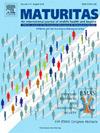患有早期子宫内膜癌的老年妇女是否治疗不足,更容易死于癌症?
IF 3.6
2区 医学
Q2 GERIATRICS & GERONTOLOGY
引用次数: 0
摘要
子宫内膜癌是发达国家最常见的妇科恶性肿瘤,主要影响老年妇女,并引起人们对潜在治疗不足的担忧。本研究旨在描述早期子宫内膜癌老年妇女的治疗模式和评估净生存率。研究设计:这项法国回顾性观察性研究使用妇科癌症登记处。从1998年到2018年诊断为FIGO I-II子宫内膜癌的患者被纳入并按年龄分层(年轻组,70岁以下,老年组,70岁或以上)。采用多重惩罚样条模型。结果:共纳入828例患者:70岁以下女性448例,70岁及以上女性380例。根据ESGO-ESTRO-ESP 2021标准,老年患者属于高危组(p)。结论:不同年龄的治疗无显著差异。虽然在单变量分析中,年龄与5年净生存率相关,但在调整诊断期、合并症和组织学后,这种关联不再被观察到。本文章由计算机程序翻译,如有差异,请以英文原文为准。
Are older women with early-stage endometrial cancer undertreated and more likely to die from their cancer?
Endometrial cancer is the most common gynecological malignancy in developed countries, mainly affecting older women and raising concerns about potential under-treatment. This study aimed to describe treatment patterns and assess net survival in older women with early-stage endometrial cancer.
Study design
This French retrospective observational study used a gynecological cancer registry. Patients diagnosed with FIGO I-II endometrial cancer from 1998 to 2018 were included and stratified by age (a younger group, under 70 years, and an older group, aged 70 years or more). A multiple penalized splines model was used.
Results
A total of 828 patients were included: 448 women aged under 70 and 380 aged 70 or more. Older patients belonged to higher-risk groups as defined by ESGO-ESTRO-ESP 2021 criteria (p < 0.001) and had a lower rate of low-grade endometrioid carcinoma (75.1 % vs. 85.7 %, p = 0.003). Treatment patterns did not differ by age; surgery plus adjuvant therapy remained the main treatment (69.7 % vs. 70.8 % in the older and younger groups, respectively, p = 0.87). 5-year net survival was 95.0 % (95 % CI: 92.6–97.6) for younger and 84.3 % (95 % CI: 78.8–90.3) for older women. The univariate hazard ratio for death in older vs. younger women was 2.38 (95 % CI: 1.19–4.74; p = 0.02). Multivariate analysis attenuated age's effect: hazard ratio 1.38 (95 % CI: 0.97–3.31; p = 0.06). Charlson Comorbidity Index and non-low-grade endometrioid histology predicted poorer survival. Diagnosis period was not associated with survival.
Conclusion
No significant difference in treatment was found according to age. Although age was associated with 5-year net survival in univariate analysis, this association was no longer observed after adjusting for diagnosis period, comorbidities, and histology.
求助全文
通过发布文献求助,成功后即可免费获取论文全文。
去求助
来源期刊

Maturitas
医学-妇产科学
CiteScore
9.10
自引率
2.00%
发文量
142
审稿时长
40 days
期刊介绍:
Maturitas is an international multidisciplinary peer reviewed scientific journal of midlife health and beyond publishing original research, reviews, consensus statements and guidelines, and mini-reviews. The journal provides a forum for all aspects of postreproductive health in both genders ranging from basic science to health and social care.
Topic areas include:• Aging• Alternative and Complementary medicines• Arthritis and Bone Health• Cancer• Cardiovascular Health• Cognitive and Physical Functioning• Epidemiology, health and social care• Gynecology/ Reproductive Endocrinology• Nutrition/ Obesity Diabetes/ Metabolic Syndrome• Menopause, Ovarian Aging• Mental Health• Pharmacology• Sexuality• Quality of Life
 求助内容:
求助内容: 应助结果提醒方式:
应助结果提醒方式:


